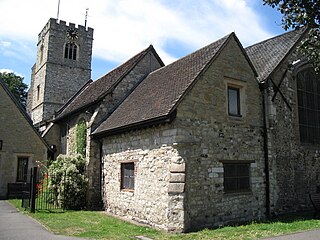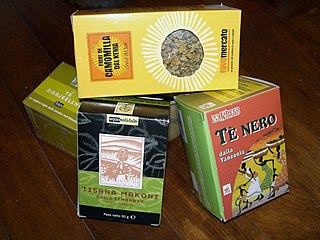
Christ Church Cathedral, more formally The Cathedral of the Holy Trinity, is the cathedral of the United Dioceses of Dublin and Glendalough and the cathedral of the ecclesiastical province of the United Provinces of Dublin and Cashel in the (Anglican) Church of Ireland. It is situated in Dublin, Ireland, and is the elder of the capital city's two medieval cathedrals, the other being St Patrick's Cathedral.

The Cathedral Church of St Nicholas is a Church of England cathedral in Newcastle upon Tyne, England. It is the seat of the Bishop of Newcastle and is the mother church of the Diocese of Newcastle, the most northerly diocese of the Anglican Church in England, which reaches from the River Tyne as far north as Berwick-upon-Tweed and as far west as Alston in Cumbria.

Peter Alan Broadbent, known as Pete Broadbent, is an English Anglican bishop. He is the current Church of England Bishop of Willesden, an area bishopric in the Diocese of London. During the vacancy in the diocesan see from 2017-2018, he served as Acting Bishop of London.

St Paul's Church is the parish church of Whitley Bay, North Tyneside, United Kingdom.The church was founded in 1864. The church's official title is St Paul's Church, Cullercoats but it is located near the centre of the town rather than the suburb of Cullercoats.

St Mary Abbots is a church located on Kensington High Street and the corner of Kensington Church Street in London W8.

St James, Didsbury, on Stenner Lane, is a Grade II* Church of England church in the Manchester suburb of Didsbury and with Emmanuel church is part of the parish of St James and Emmanuel, Didsbury.

The Church of St Nicholas, Charlwood is the parish church of Charlwood, Surrey, England. With a 12th-century tower and nave section and examples of 13th to 15th century art, fixtures and architecture, it is a Grade I listed building.

St Mary's Church, Portsea stands on the oldest church site on Portsea Island, Hampshire, England, with a history stretching back to the 11th century. Archaeological research indicates that there was a church here in 650, although 1170 is the earliest date in recorded history.

The Church of St Thomas, Thurstonland, West Yorkshire, England, is an Anglican church. It is an Arts and Crafts building in Gothic Revival style, designed by James Mallinson and William Swinden Barber, and completed in 1870. The building was funded by William Legge, 5th Earl of Dartmouth, and it was consecrated by Robert Bickersteth, Bishop of Ripon. The total height of the tower and spire is 109 feet (33 m), and the nave contains an arch-braced hammerbeam roof.
Nicholas Alan "Nick" Chamberlain is a British Anglican bishop. On 19 November 2015, he became the suffragan Bishop of Grantham in the Diocese of Lincoln. He had previously been vicar of the parish of St George and St Hilda, Jesmond, in the Diocese of Newcastle since 2006. Chamberlain was the first bishop in the Church of England to come out as gay on 2 September 2016.
Mark Simon Austin Tanner is a British Anglican bishop and academic. Since 2016, he has been the Bishop of Berwick, a suffragan bishop in the Diocese of Newcastle From August 2011 until his consecration, he was the Warden of Cranmer Hall, Durham, a Church of England theological college. In September 2016, he was announced as the next Bishop of Berwick, and was consecrated a bishop on 18 October 2016 during a service at York Minster.

St Margaret's Church or the Church of St Margaret of Antioch is a Church of England parish church in Barking, East London. The church is a grade I listed building built on a site dating back to the 13th century within the grounds of Barking Abbey, the ruins of a former royal monastery that was originally established in the 7th century. The building is dedicated to Margaret the Virgin.

St Peter's Church is a Church of England parish church in Stockton-on-Tees, County Durham. The church is a grade II* listed building.

The Church of St John the Divine is a Church of England parish church in Brooklands, Sale, Greater Manchester. The church is a grade II* listed building.
George John Charles Marchant was a British Anglican priest. From 1974 to 1983, he was Archdeacon of Auckland in the Diocese of Durham. He had previously been Vicar of St Nicholas' Church, Durham, and before that ministered in the Diocese of London, the Diocese of Ely, and the Diocese of Lincoln.

All Saints Church is a Church of England parish church in Tooting, Wandsworth, Greater London. The church was designed by Temple Moore and is a grade II listed building.

The Church of St Mary, also known as Lowgate St Mary, is a Church of England parish church in Kingston upon Hull, East Riding of Yorkshire. The church is a grade II* listed building.
Arun Arora is a British Anglican priest and solicitor. He has been Vicar of St Nicholas' Church, Durham since 2017. From 2012 to 2017, he served as Director of Communications of the Archbishops' Council of the Church of England.
Joseph Patricius Hawes is a British Anglican priest. Since 2018, he has been the Dean of St Edmundsbury. From 2003 to 2018, he was Vicar of All Saints Church, Fulham in the Diocese of London. His early parish ministry was spent in the Diocese of Southwark.


























